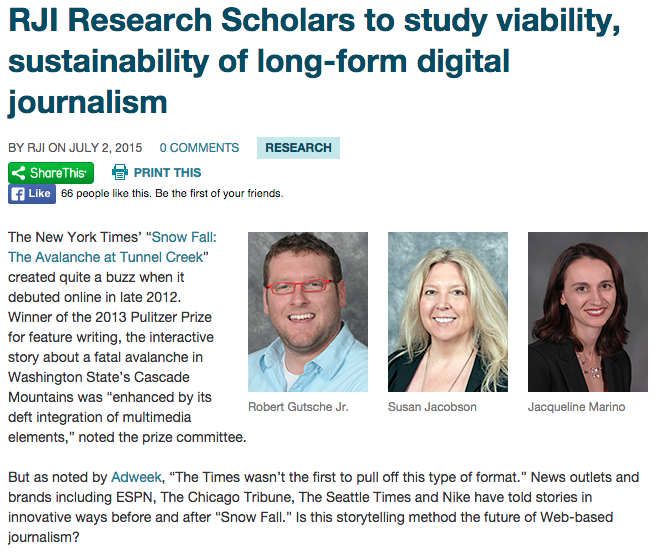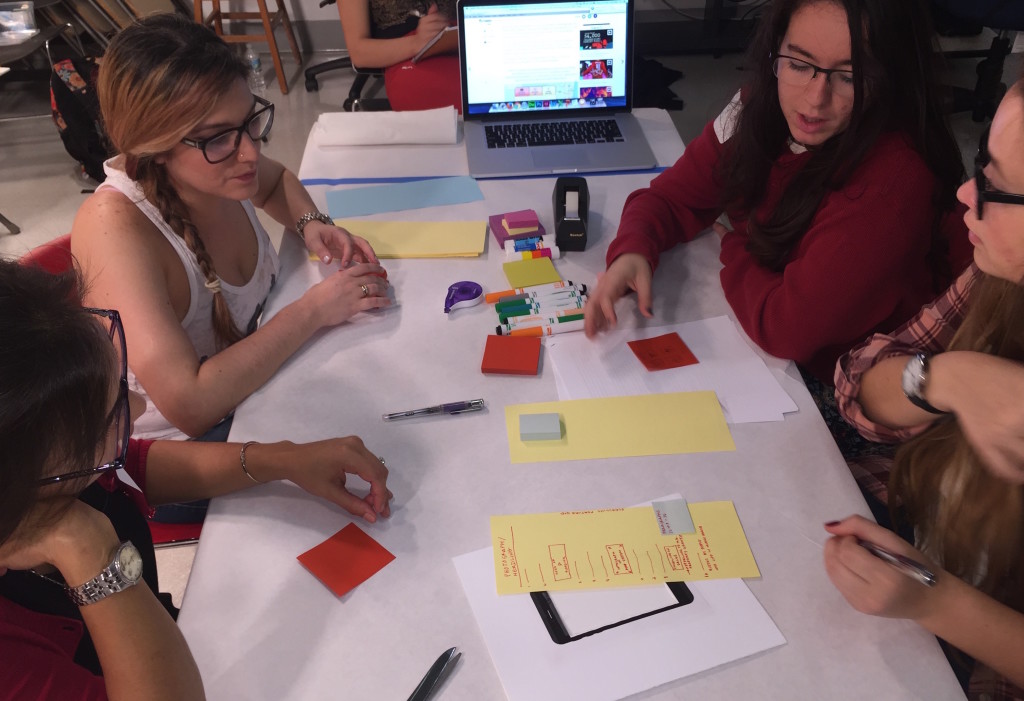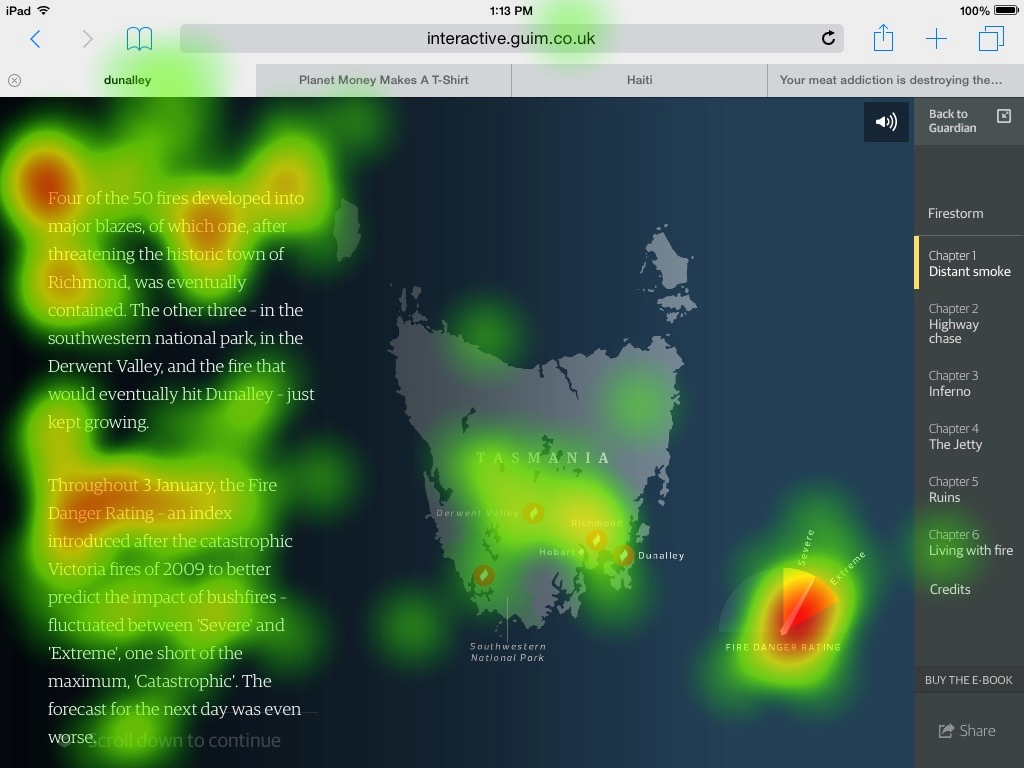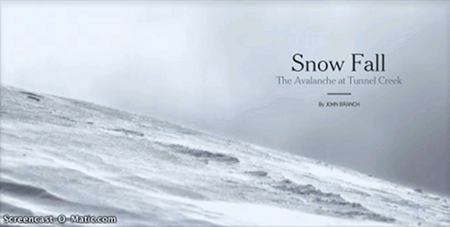Project Examines Future of Multimedia Journalism
Snow Fall, published by The New York Times in 2012 (click at right), sparked a rise of long-form and interactive multimedia projects at news outlets and startups across the industry.
But this work is often costly – both in terms of human labor and technology. And with those costs preventing so many media outlets from trying new things, there’s been little research done to determine if this type of work is even worth future investment.
Along with Jacqueline Marino at Kent State University and Susan Jacobson at Florida International University, I examined audience responses to multimedia and interactive news projects delivered on laptop/desktop and mobile platforms.
With funding as Research Scholars at the Donald W. Reynolds Journalism Institute at the University of Missouri, “Cracking the Code: How Audiences Perceive Value in Multimedia and Interactive News Projects” tested various narrative structures, interactive elements, and design strategies in a combination of focus groups, one-on-one interview sessions and through eye-tracking.
Our research project continued work that we had already done on the genre of long-form, literary journalism.
 For the project, I led efforts to investigate the effectiveness of long-form and multimedia products on mobile devices to recommend possible innovations for future mobile news uses.
For the project, I led efforts to investigate the effectiveness of long-form and multimedia products on mobile devices to recommend possible innovations for future mobile news uses.
Marino investigated design, multimedia elements and narrative strategies that attract and retain audience interest. Jacobson explored the integration of interactive applications into news storytelling.
Results appeared in several conference papers and an industry white paper that outlines possible innovations for future development and academic journal and professional press articles.
Related Research
Marino, J., Gutsche, Jr., R. E., & Jacobson, S. (2016). Groundbreaking storytelling or dancing hamsters? What eyetracking tells us about the future of digital longform journalism. Accepted for presentation at the Newspaper and Online News Division, Association for Education in Journalism and Mass Communication, Minneapolis, Minnesota, August 4-7.
Jacobson, S., Marino, J., & Gutsche, Jr., R. E. (2016). Should there be an app for that?: An analysis of interactive applications within longform news stories. Accepted for presentation at the Newspaper and Online News Division, Association for Education in Journalism and Mass Communication, Minneapolis, Minnesota, August 4-7.
Marino, J., Gutsche, Jr., R. E., & Jacobson, S. (2016). Literary journalism: Exploring the genre. Panel for the International Association for Literary Journalism Studies, Association for Education in Journalism and Mass Communication, Minneapolis, Minnesota, August 4-7.
Marino, J., Jacobson, S., & Gutsche, Jr., R. E. (2016). “Read, watch or tap? Eyetracking long-form journalism on mobile devices.” Accepted for presentation at International Association for Literary Journalism Studies, Eleventh International Conference for Literary Journalism Studies, Pontifícia Universidade Católica do Rio Grande do Sul, Porto Alegre – Rio Grande do Sul, Brasil, May 19-21.
Gutsche, Jr., R. E., Marino, J., & Jacobson, S. (2016). “Cracking the code: Can long-form multimedia news attract – and keep – audiences?” Accepted for presentation at Journalism Interactive 2016, University of Florida, Gainesville, Florida, February 26-27.
Jacobson, S., Gutsche, Jr., R. E., & Marino, J. (2016). 3 lessons learned – so far – from studying interactive elements in long-form multimedia news stories, rjionline.com, https://www.rjionline.org/stories/3-lessons-learned-so-far-from-studying-interactive-elements-in-long-form-mu, January 28.
Gutsche, Jr., R. E., Jacobson, S., & Marino, J. (2015). Classrooms as homes for creative, engaged research, EducationShift, http://mediashift.org/2015/12/classrooms-as-homes-for-creative-engaged-research, December 10.
Gutsche, Jr., R. E., Jacobson, S., & Marino, J. (2015). Can long-form journalism thrive in the age of the mobile device?, rjionline.org, http://www.rjionline.org/blog/can-long-form-journalism-thrive-age-mobile-device, October 28.
Marino, J., Jacobson, S., & Gutsche, Jr., R. E. (2015). The eyes have it: Using eye tracking to examine reader engagement, rjionline.org, http://www.rjionline.org/news/eyes-have-it, October 1.
Jacobson, S., Marino, J. & Gutsche, Jr., R. E. (2015). The digital animation of literary journalism. Journalism: Theory, Practice, and Criticism. (DOI: 10.1177/1464884914568079). PDF
Classrooms as Center for Interactive Pedagogy
My Spring 2016 semester in Audience Analysis at Florida International University started when Kent State’s Jacquline Marino Skyped-in to talk with students about the use of eyetracking technology related to our study, following a semester where previous Audience Analysis students helped plan and test a first set of focus groups examined how people interacted with long-form journalism on mobile devices. 
In both Fall and Spring, the two classes of 40 were split into multiple groups to test protocols for understanding how future participants would interact with long-form projects on laptops and on mobile phones.
Most exciting was how students helped pilot a round of focus groups using the method of paper prototyping, which allows users to design what they might want to see and experience on mobile phones (image at right).
From this exercise, students were able to experience more about focus groups as a method for examining audiences and they provided valuable insights that we will employ in future focus groups as part of this study.
By early October 2015, Marino had completed her data collection related to the eyetracking component of the study. At FIU, we’d finished the first round of two types of focus groups, and we were able to view images of heat maps related to eye-tracking that Marino had been doing there for our project (image below). Along with other data, these images helped us examine what elements of long-form multimedia journalism attract and retain audience interest.

To wrap up the Fall 2015 semester, our team published a piece on MediaShift about the process of paper prototyping. In Spring, Audience Analysis students presented their findings from mock focus groups and from paper prototyping to students in Marino’s magazine writing class. It was an interesting discussion about how audience research can (or should?) influence how and what journalists produce.
In February, students from Jacqueline Marino’s magazine writing course Skyped-in to discuss how they used eyetracking in their class to examine user interactions and to share their findings and implications of their findings upon magazine writing.
Check out more here for other interesting and related, student-based research projects.

